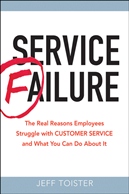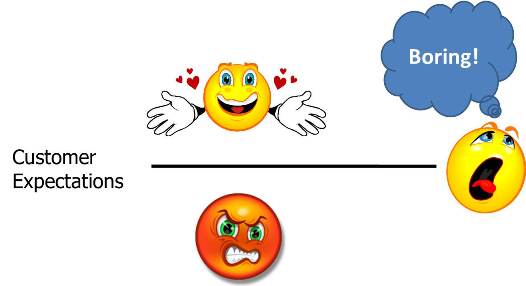Do you know the real reason your customer is angry?
 Jeff Toister
Jeff Toister  Wednesday, November 9, 2011 at 2:58PM |
Wednesday, November 9, 2011 at 2:58PM | Problems can and will happen in customer service. What happens next is often critical. Will the problem be resolved? Or, will more mistakes exacerbate the situation like pouring gas on a fire?
Here's a recent example that shows both.
I'm a huge fan of New Balance and buy nearly all of my running gear from their online store, Shop New Balance. Recently, I received an email offering 15% off my order plus free shipping. It was time to get some new running shoes anyway, so I carefully followed the instructions on the email and tried to place my order.
Unfortunately, my 15% discount wasn't added at check out, so I had to cancel my order. <----- Problem
I emailed their customer service department and explained the issue. A customer service rep emailed me back the next day and apologized for the error. He went on to explain that the online promotion had ended the night I tried to place my order, so I would have to call customer service to get my 15% discount.
This was a minor bummer. I had placed my order online because it was easier to browse through their selection and most of my account information was already on file. Now, I needed to find time to call them and place the whole order all over again. <----- Problem #2
I called a few days later and spoke with a rep named Laura. I was bracing for a fight as I explained the situation, but she cheerfully told me she'd be happy to honor the discount. <----- Resolution
Now comes the hero factor. Several of the items I originally ordered were now marked down 20% off their original price. That was better than the 15% discount I had hoped for, but Laura gave me an additional 15% off anyway. Savings + savings = awesome. <----- Hero Moment
I also realized that I was leaving town for a long weekend and there was a good chance that my order might be delivered while I was gone. This would mean the shipment would sit by my front door for several days advertising the fact that I wasn't home. I explained this to Laura and asked if she could delay shipment by a few days. She assured me she would take care of it.
A couple days later I was pleasantly surprised to receive my order before I left for my trip. Laura had upgraded my shipping to express at no extra charge to ensure everything arrived before I left instead of after I returned. <----- Hero Moment #2
Unfortunately, one of my new shoes was damaged and will need to be returned. That was disappointing, but not the end of the world. <----- Problem #3
If you are keeping score, I experienced 3 Problems and 2 Hero Moments. What does that add up to? A very satisfied customer.
Laura's hero work more than made up for the other issues I experienced. Would I be disappointed if the problems happened again? Certainly. I've also done enough business with Shop New Balance over the years to understand that this was an unusual situation and my next order will probably be smooth sailing. In the meantime, Laura's outstanding problem resolution earned them plenty of goodwill.
Here are a few of my takeways from the situation.
- Don't make problems any worse than they need to be. Anything less than an immediate resolution can make a mountain out of a molehill.
- Empower your employees to give customers more than they expect. It will make it much easier to go way beyond resolution and turn a problem into an opportunity to delight. (Chris Zane's wonderful book, Reinventing the Wheel, gives many examples about this.)
- Mixing in a few hero moments will earn you enough goodwill to keep your customers' business when you occasionally stumble.





